
One of the more unique sushi rolls out there, spider rolls are known for their fried soft shell crab filling and their unique “spider like” appearance of the crab legs sticking out both ends of the roll. Spider rolls are a beautiful and tasty addition to any sushi platter. They are also fun to prepare!
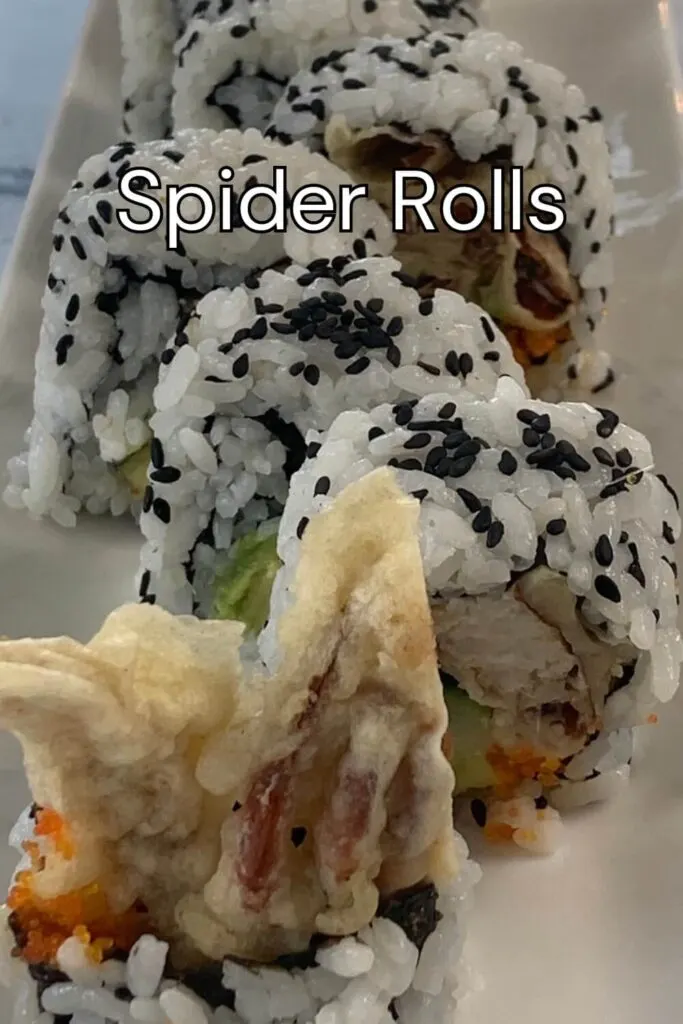
Table of Contents
What is a Spider Roll
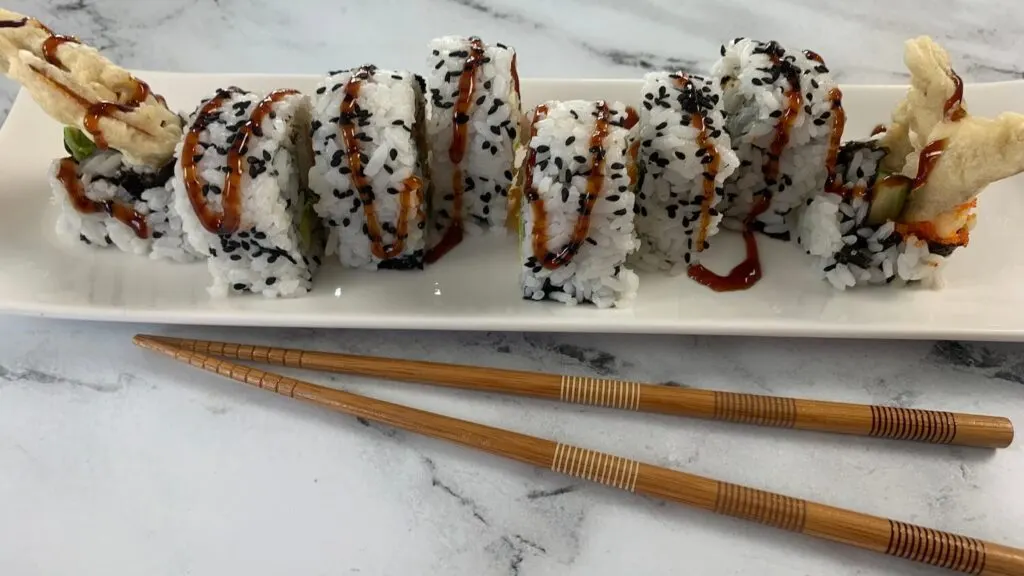
Spider rolls are sushi rolls with a filling of tempura style soft shell crab and vegetables wrapped in a seaweed wrapper called a nori sheet. Developed in the US, this roll is popular in sushi restaurants across North American but is not a traditional Japanese sushi and is hard to find in Japan.
I typically use avocado and cucumber as the veggies in my spider roll along with about a tablespoon of tobiko or masago (fish roe) as I think the flavors and textures of these ingredients complement the soft shell crab well. I then like to garnish the rice with black sesame seeds and drizzle with eel sauce (unagi sauce) to finish the roll.
How to Control the Thickness of Your Rolls
You can control how thick your sushi rolls are by how much of the nori sheet you use. This recipe uses an entire nori sheet which makes thicker rolls. I prefer to an entire nori sheet for spider rolls as they contain a lot of ingredients and they are tougher to roll if you use a partial nori sheet.
If you like thinner rolls you can use 2/3 or 1/2 of the nori sheet. However, this would be difficult to roll unless you reduce the fillings.
How to Make Spider Rolls
Cook Sushi Rice
While there are some more unique components to preparing this roll, you can multi-task by preparing the soft shell crab while the sushi rice is cooking. This allows you to prepare spider rolls in a comparable amount of time as many other sushi rolls. Below we show instructions and pictures of each step in the process to prepare these fun rolls.
1. Rinse 1 1/3 cup of sushi rice by placing it in a colander and running water through it until the water is clear.
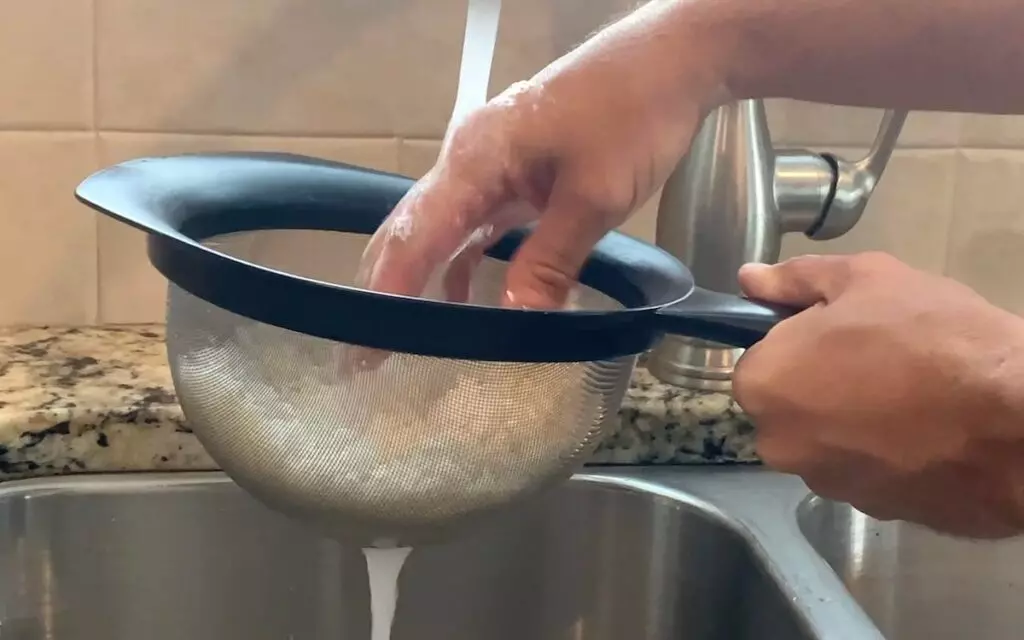
2. After the rice is rinsed, add it to a sauce pan with 1 2/3 cups of water. I would check the instructions on the sushi rice package to see exactly how much water to add as it can vary depending on the brand.

3. Bring the water to a boil and then reduce the heat to low. Cover and let the rice simmer for 20 to 30 minutes, or until the water is absorbed and the rice is soft. While the rice is simmering, you can skip ahead and prepare the soft shell crab tempura.
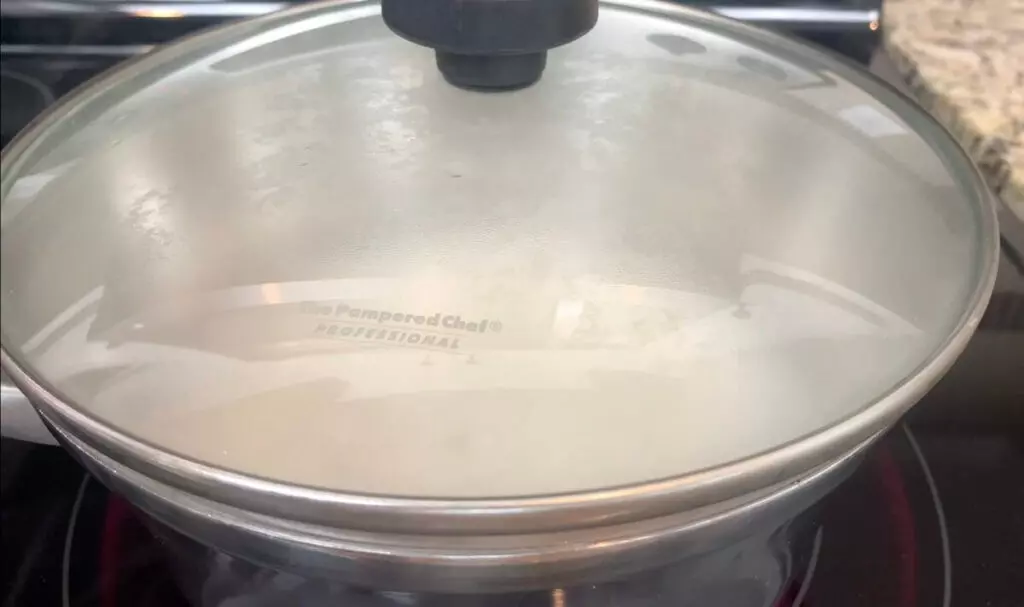
4. After 20-30 minutes of simmering, remove the rice, place into a bowl or dish, and let cool. I would line the dish with parchment paper prior to adding the rice to avoid sticking.

5. Mix 1/4 cup of sushi vinegar into your rice. Stir until it has absorbed into the rice. Once cooled and fully absorbed, your rice is ready to roll!

Heat the Oil and Prepare the Soft Shell Crabs
1. Heat vegetable oil on medium heat to 350 degrees.
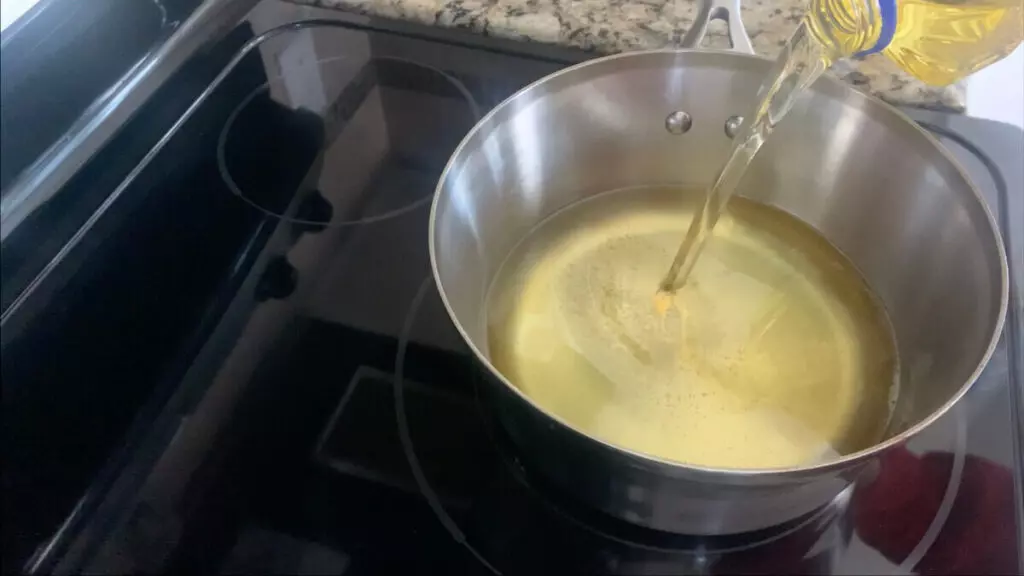
2. Make sure your soft shell crabs are cleaned. Most often they will come cleaned if you purchase from a seafood vendor but if not, you can clean them by cutting the face off, removing the gills under both sides of the crab, and removing the flap from the underside of the crab.
3. Blot your soft shell crabs with a paper towel to dry them off. If they are too wet they will pop during frying.
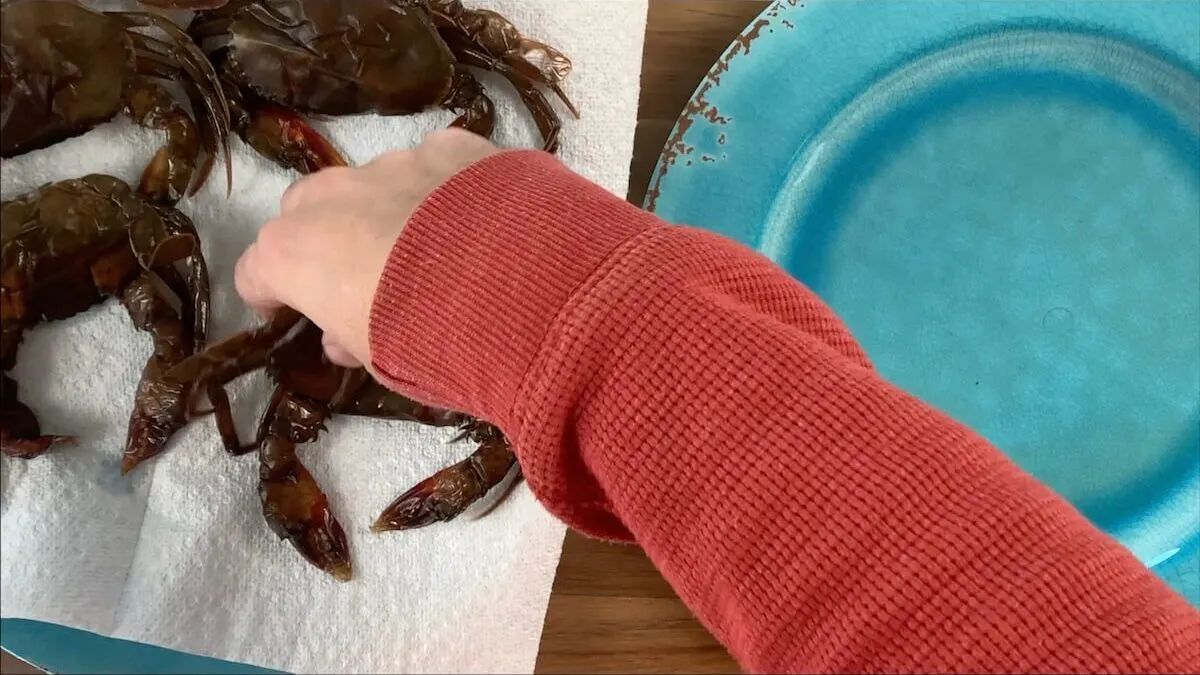
4. Place one cup of flour into a bowl or onto a plate. Then dip the crabs into the flour making sure to cover both sides along with the legs.

Prepare Tempura Batter
1. Assemble the tempura batter ingredients and chill the water. You may need to add ice if you don’t have access to very cold water. However, make sure to remove ice cubes before combining with egg.
2. Crack the egg into a small bowl and beat until the yolk and white are combined.
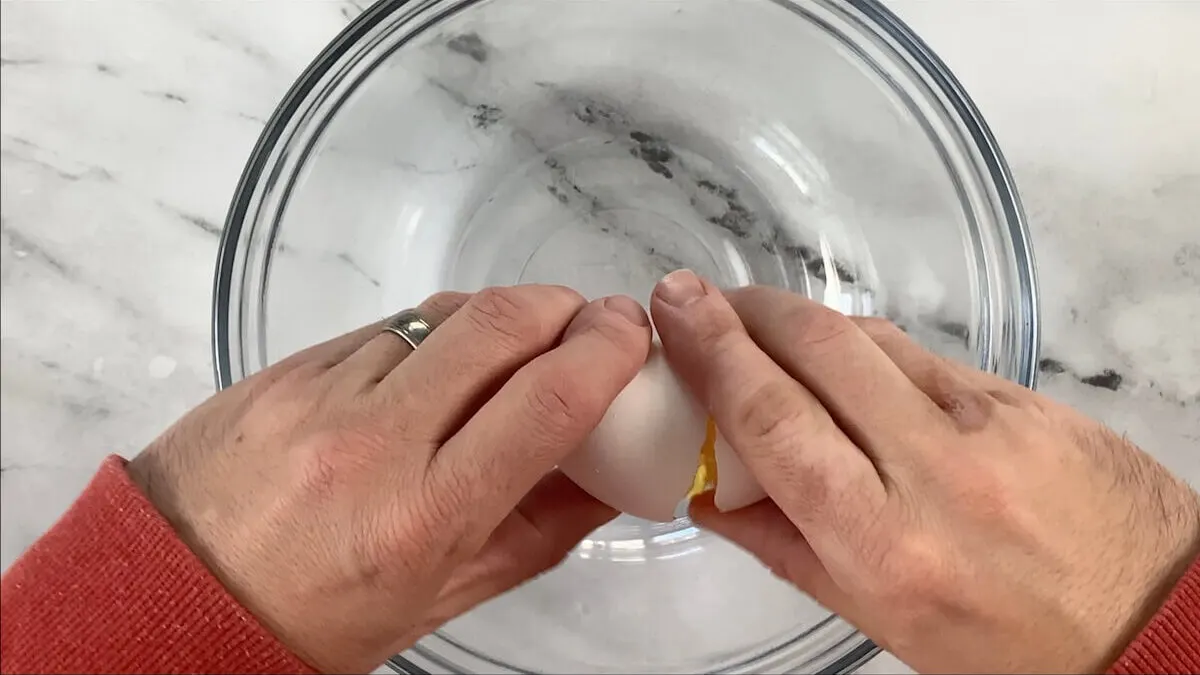
3. Add cold water to the egg and mix well. I like to strain the ice water into the egg to assure ice-cold water with no ice cubes getting into the mixture.
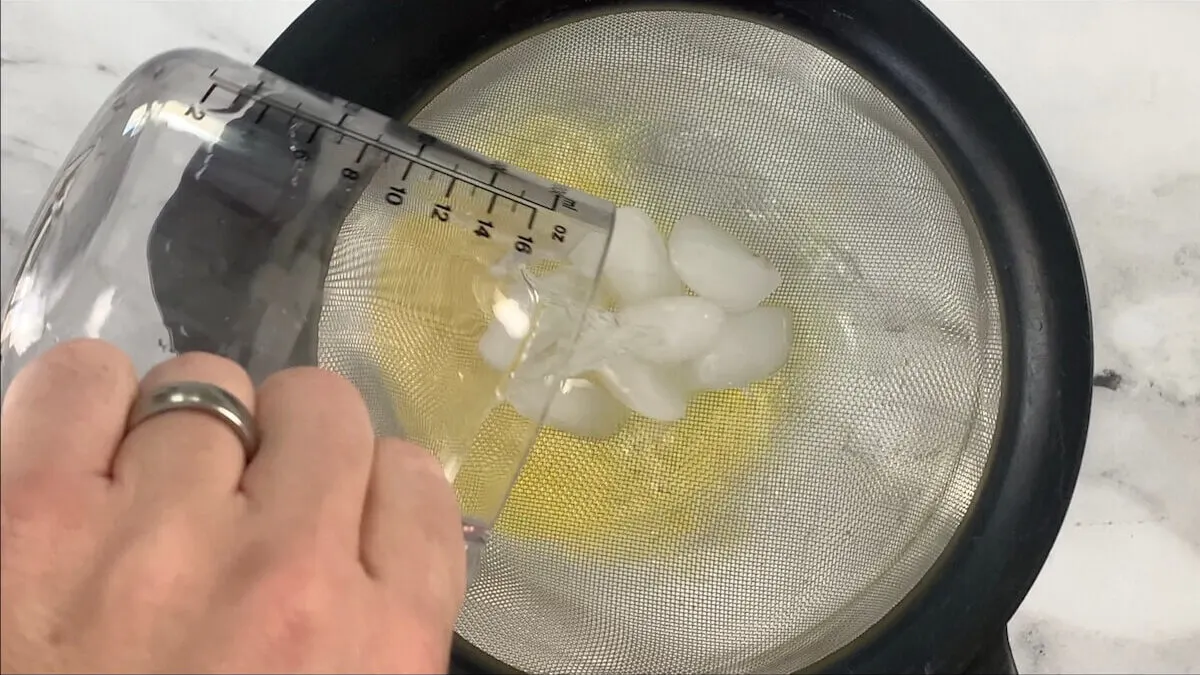
4. Sift 1 cup of flour into the egg and water combination.
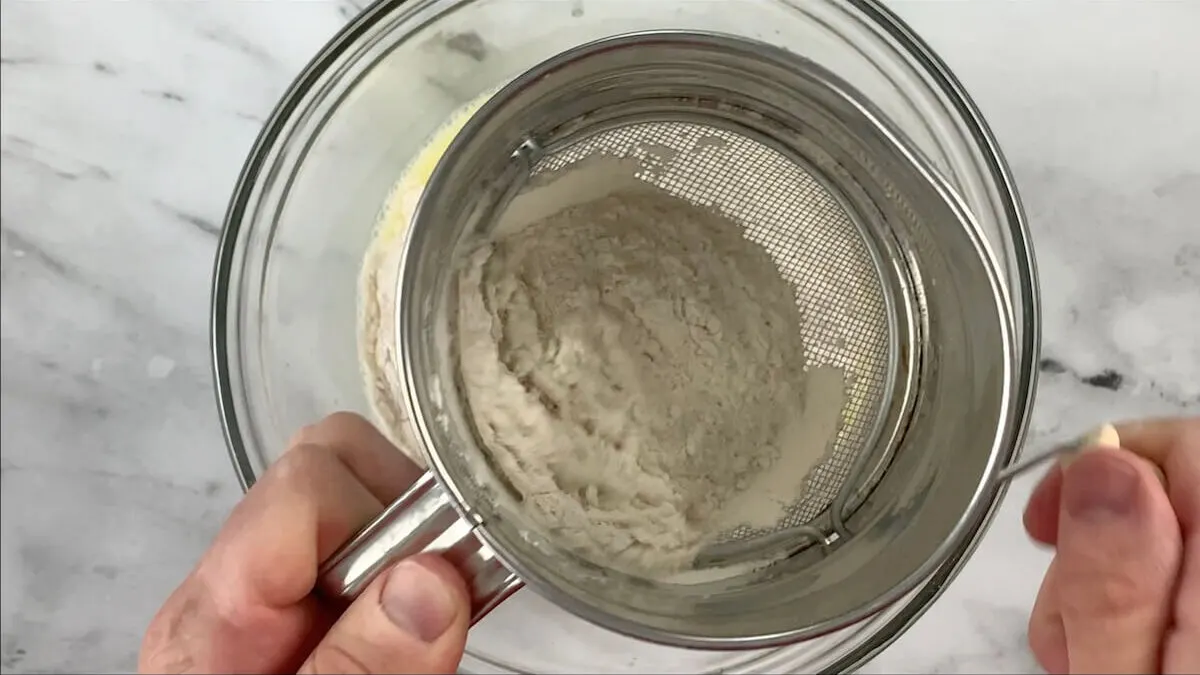
5. Using a spoon or chopstick, lightly mix making sure not to over stir. The batter should be mixed but a little lumpy.
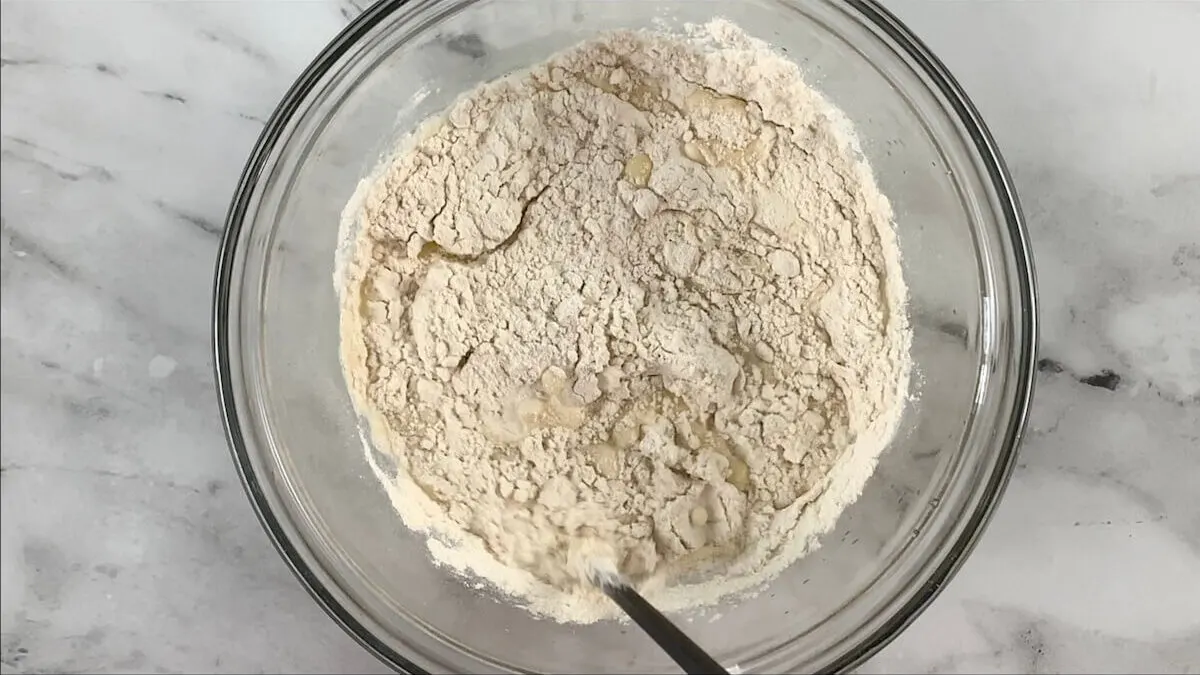
Prepare the Crab Tempura
1. Dip the flour coated crabs into the tempura batter ensuring the entire crab is coated with batter.
2. Next, place the tempura coated crab into the hot oil and cook for 4 minutes.
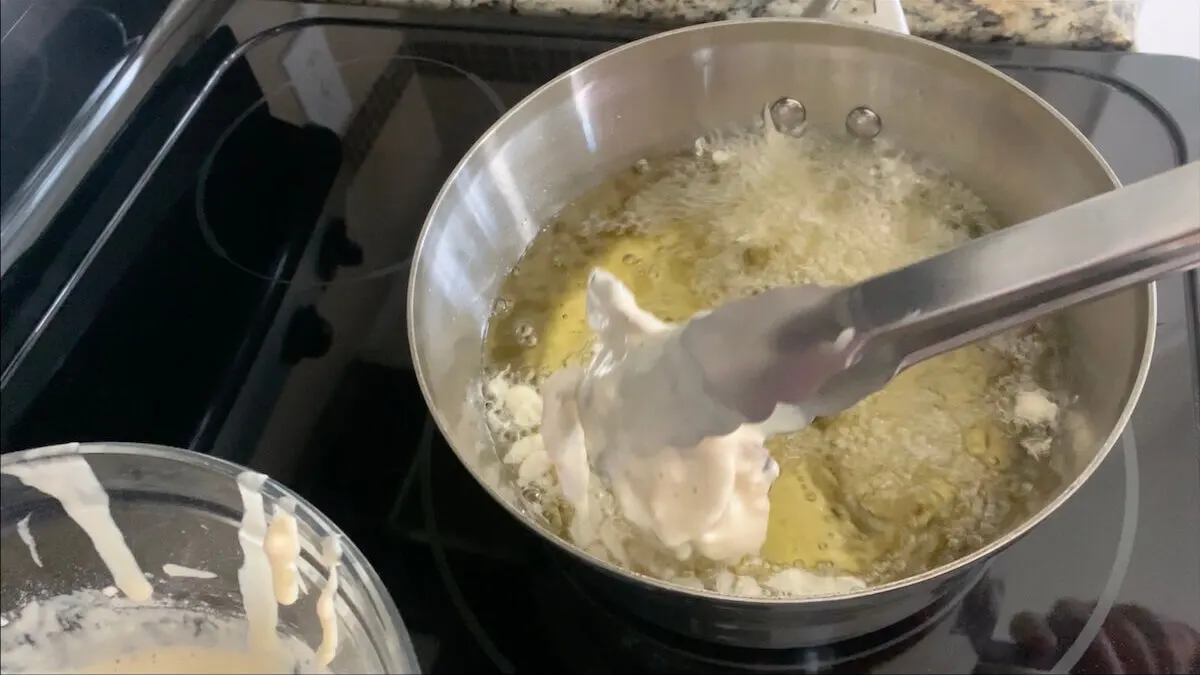
3. After four minutes, remove from the oil and place the crabs onto a paper towel-lined plate.
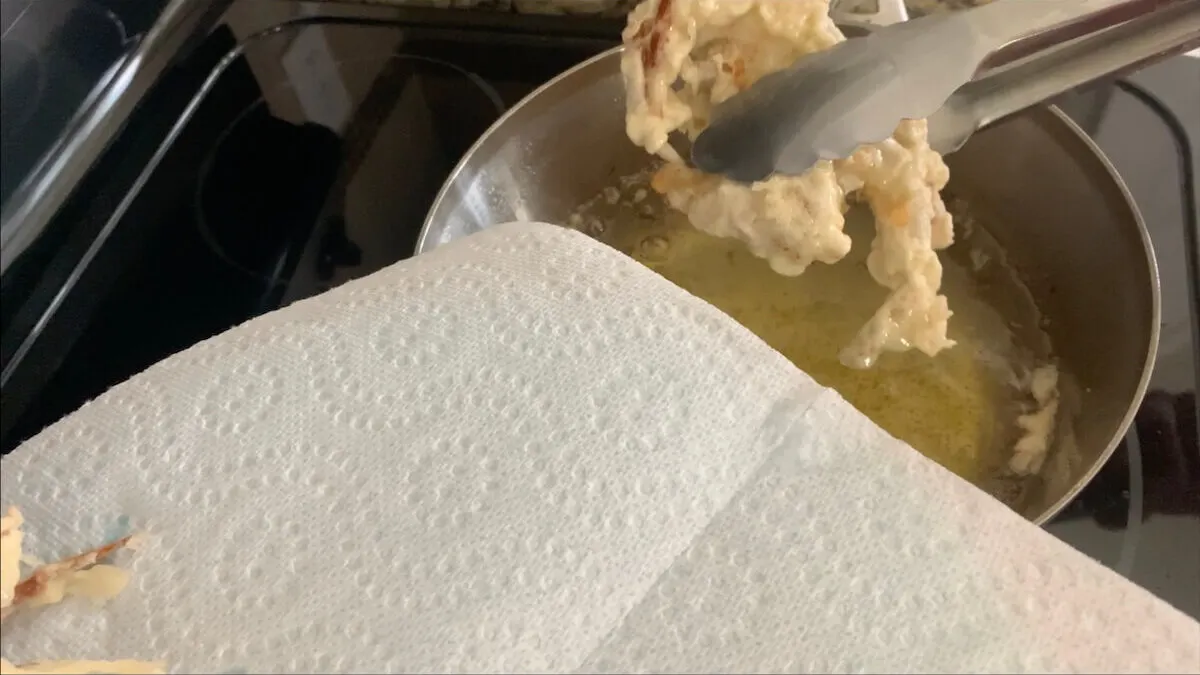
Assemble the Spider Rolls
1. Slice the crab: Slice your soft shell tempura crab in half the long way to prepare it for your spider roll.
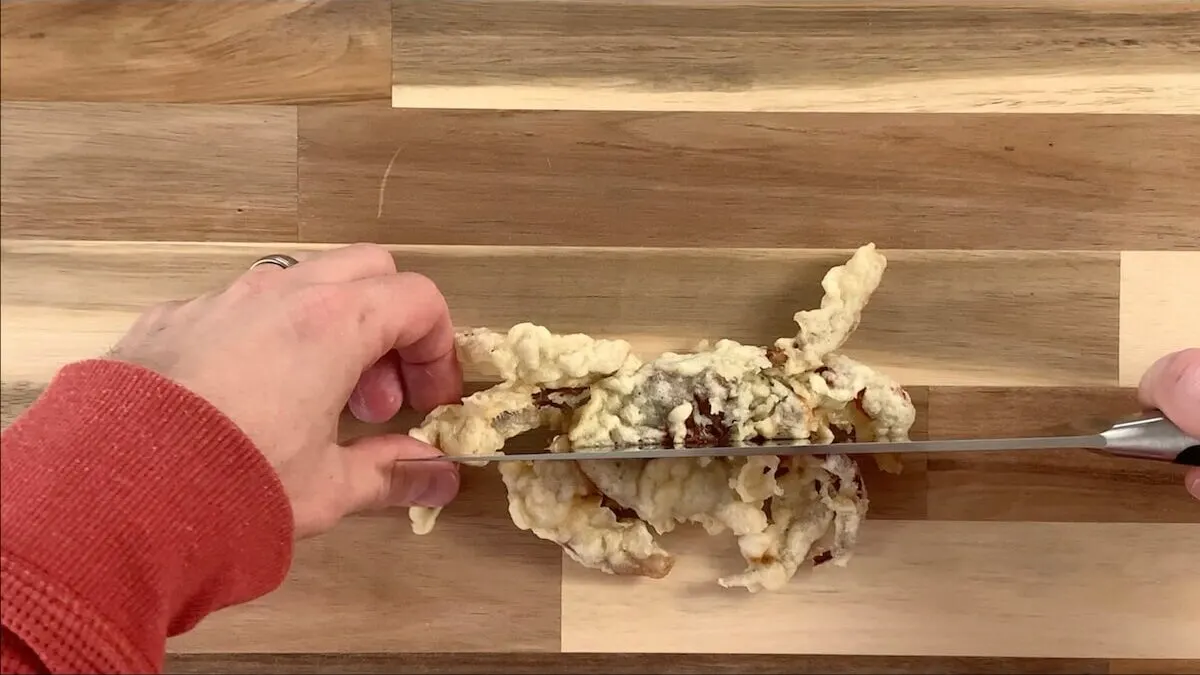
2. Prepare your bamboo sushi mat: Cover your bamboo sushi mat with plastic wrap. This will help keep the rice from sticking to it.
3. Press rice onto nori sheets: Next, place the nori sheet onto the plastic wrap with the shiny side facing down. Then press around 1 cup of rice onto the nori sheet in an even layer. Tip: Wet your hands prior to handling the sushi rice. This will prevent the rice from sticking to your hands.
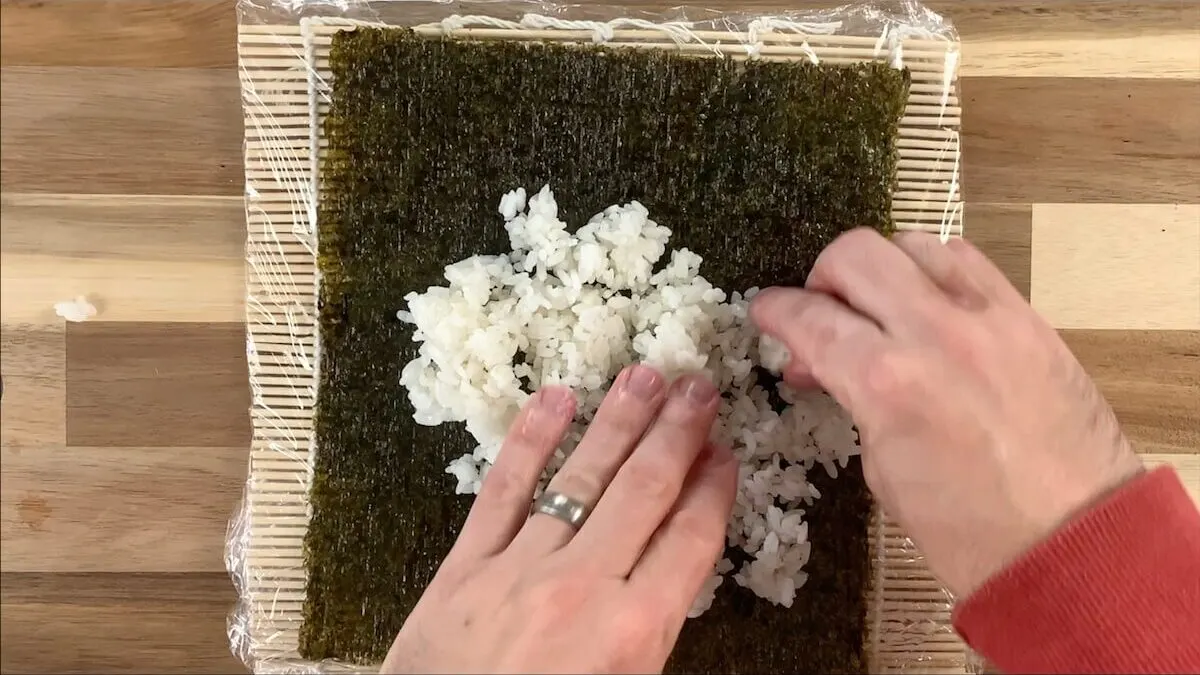
4. Add sesame seeds: After the rice is pressed onto the nori sheet, add a thin layer of black sesame seeds to the top of the rice. Then flip the sheet over so the rice is facing down.
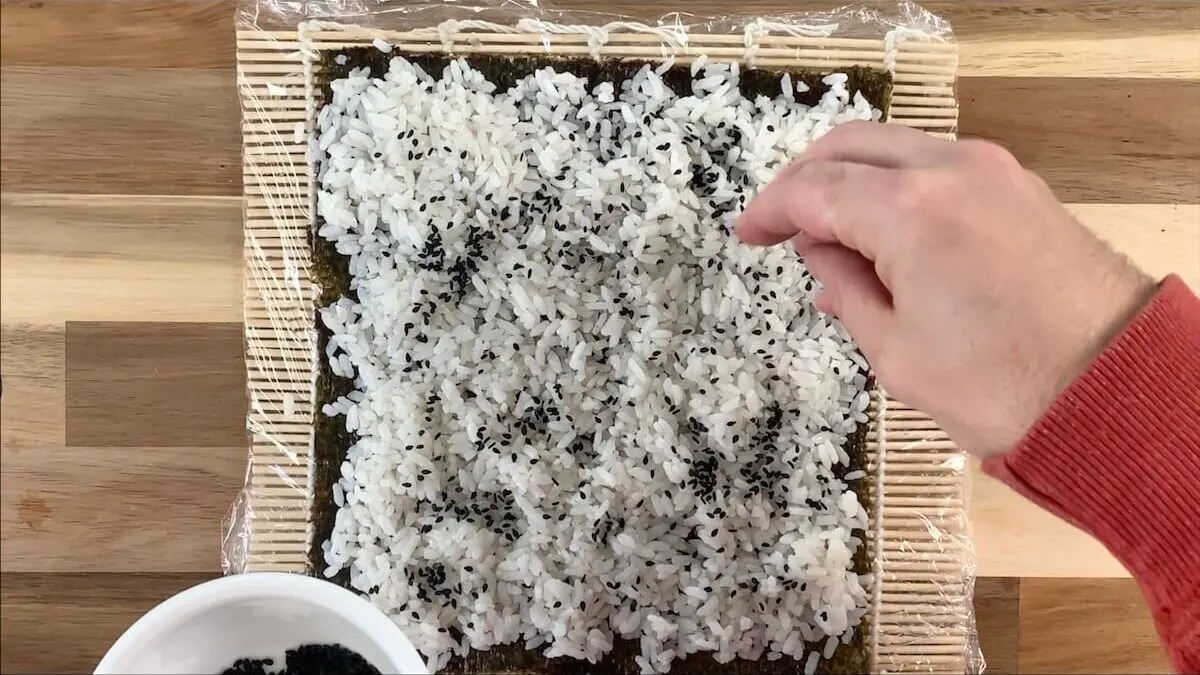
5. Flip nori sheet over: Gently flip the nori sheet over so the rice is facing down. You will add the filling directly to the nori sheet with the rice on the outside.
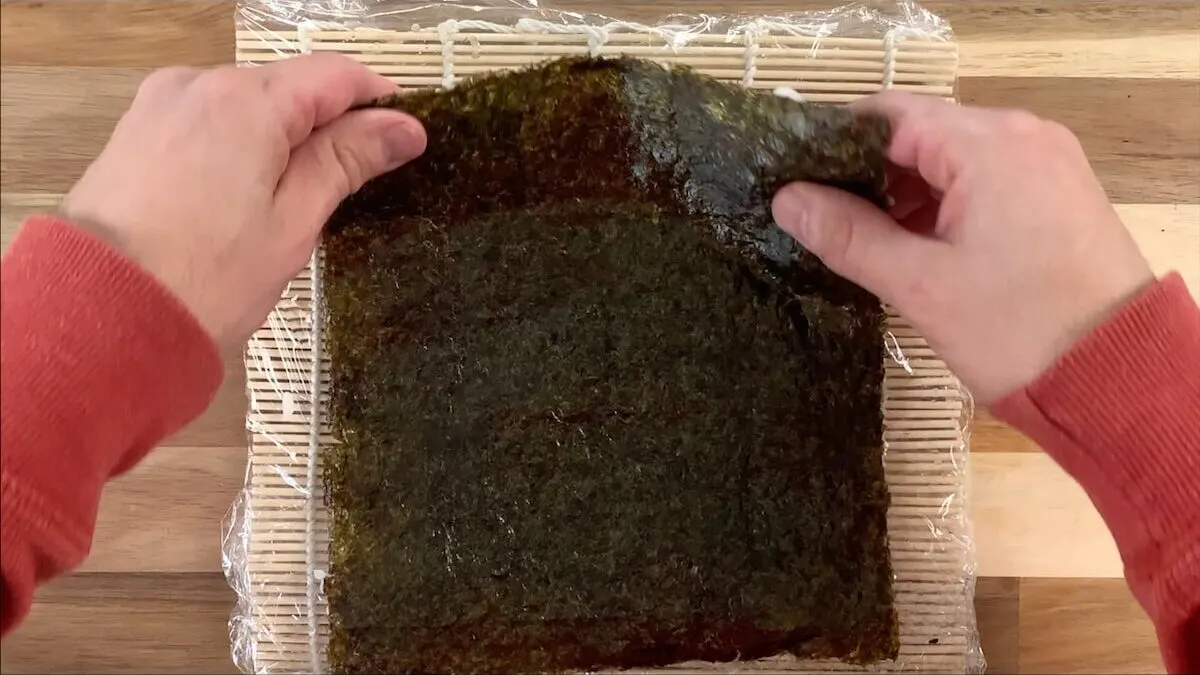
6. Add the crab: Place both halves of the soft shell crab onto the nori sheet next to each other so the legs are sticking out each end of the sushi. This is what gives the spider roll its signature “spider like” appearance.
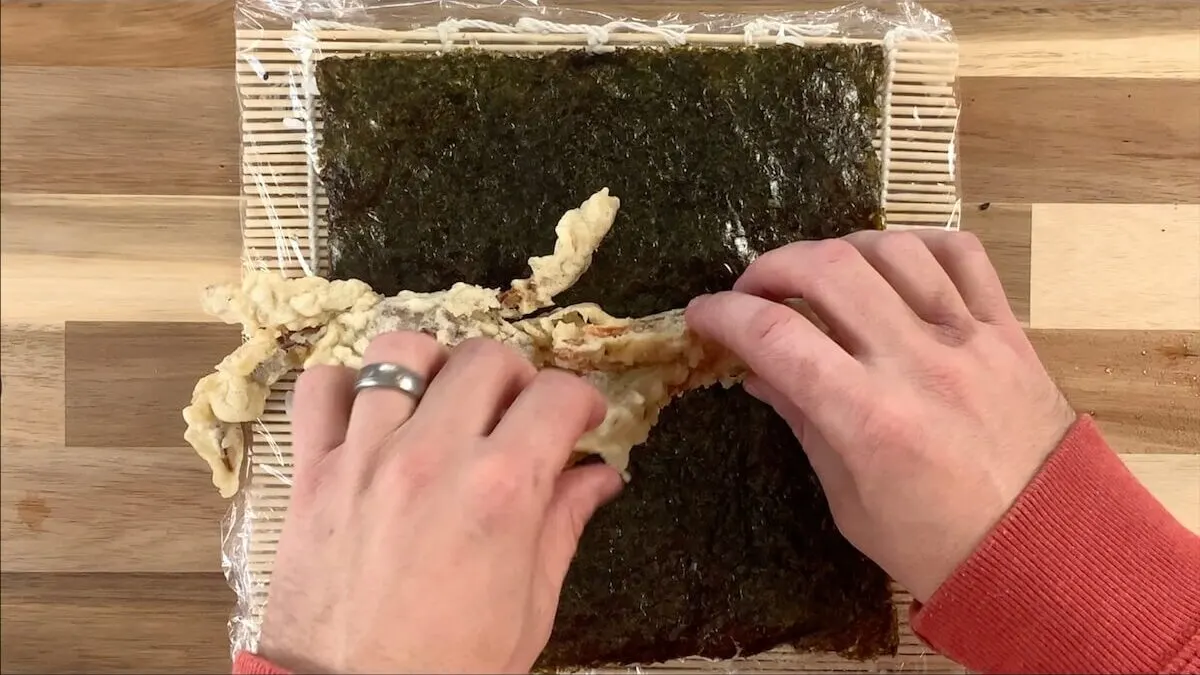
7. Add the masago or tobiko: Spread around a tablespoon of masago (or tobiko) evenly across the nori sheet. This will add a bit of crunch and salty flavor to your roll.
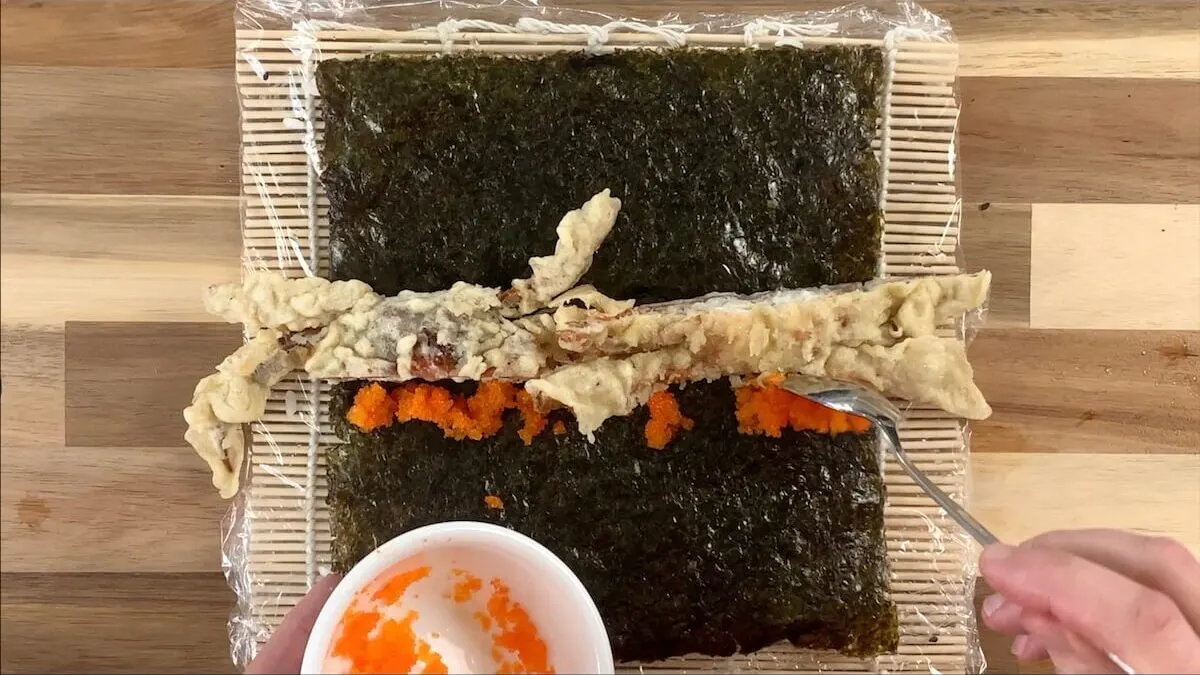
8. Cut the avocado and cucumber: Cut the cucumbers into strips that are as long as your nori sheet and about 1/8 inch thick. Then slice the avocado in half the long way. Remove the seed and cut each half into 6 slices. Each whole avocado should yield around 12 slices. I often cut the slices right out of the avocado half and add directly to the roll to ensure freshness. You can also drizzle a little lemon juice over your cut avocado to prevent it from browning in your roll.
9. Add the avocado and cucumber: Add the avocado slices and cucumber sticks horizontally along the nori sheet. In general, I add 2-3 avocado slices and 1-2 cucumber sticks depending on the size of each ingredient and how everything fits.
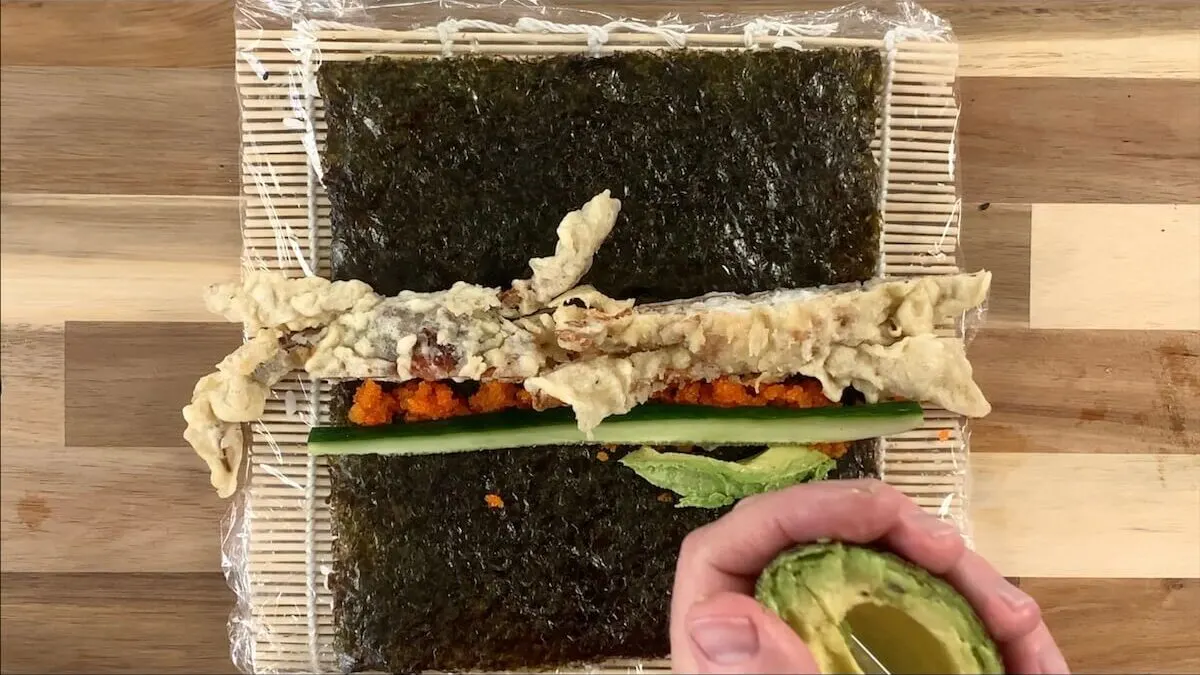
10. Roll the sushi: Use the bamboo sushi mat to fold your roll until it is completely enclosed. Once the rice is making contact with the nori roll, pull back the sushi mat so it doesn’t get caught in the sushi. Still using the sushi mat as your guide, finish rolling until the roll is completely wrapped. Then wrap the sushi mat around the roll and gently press, tightening the roll together. Keep in mind that rolling sushi is an art that may take some practice so don’t get frustrated if it doesn’t look perfect your first time. It will get easier the more you do it.
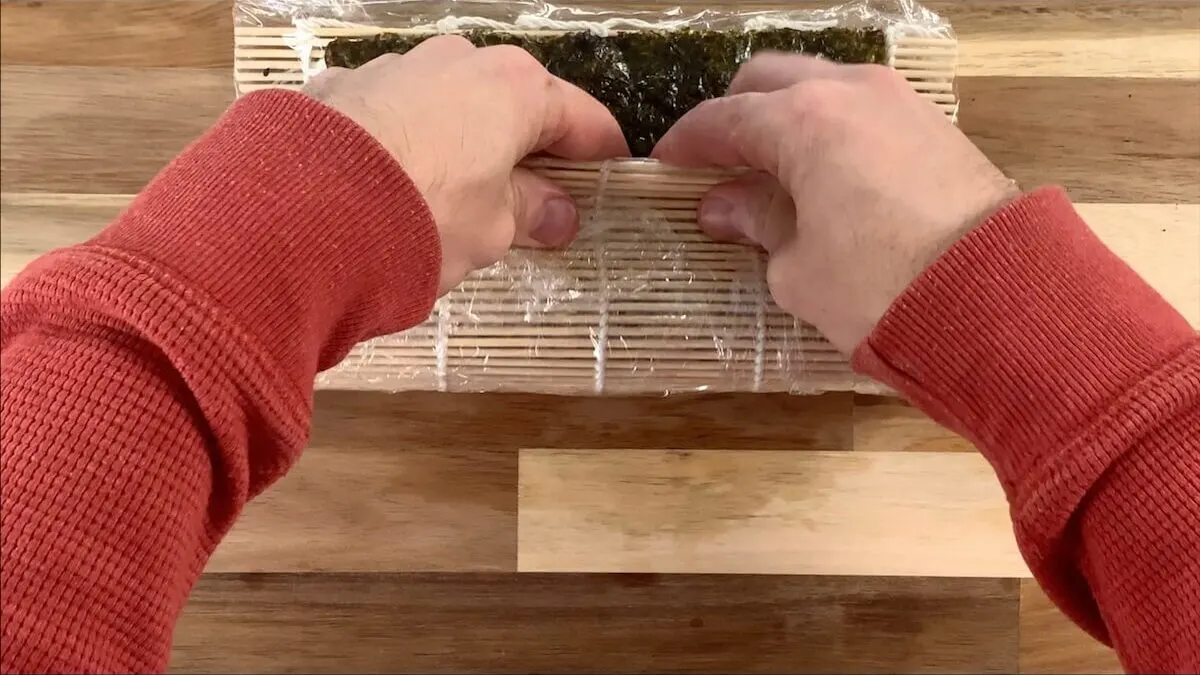
11. Cut the roll: Using a sharp knife, cut the roll into 8 pieces. I do this by first cutting the roll in half. Then cut each half in half. Then cut each fourth in half. Tip: Be sure to clean and wet the edge of your knife before cutting each roll.
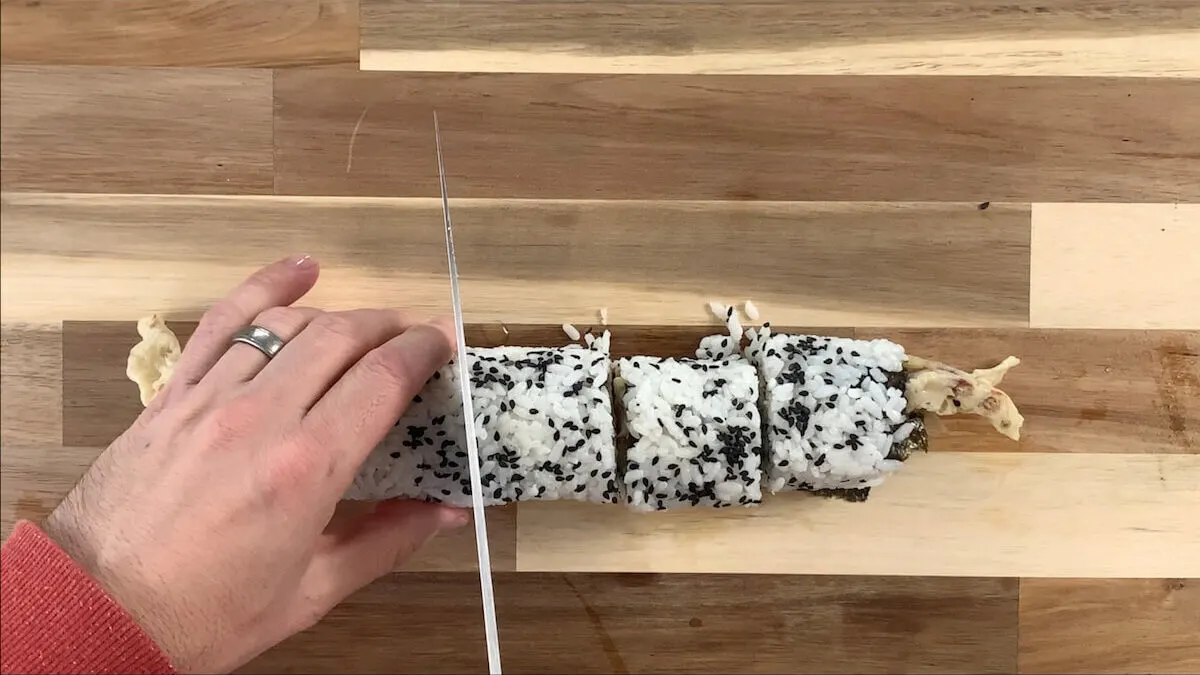
12. Drizzle with unagi (eel) sauce (optional): I like to lightly drizzle my spider rolls with unagi (eel) sauce prior to serving as I think it provides a good flavor and an appetizing presentation.
13. Serve and enjoy: I usually serve with unagi (eel) sauce in a ramekin for dipping. You can also serve with soy sauce, wasabi, and pickled ginger.
Spider Roll Recipe
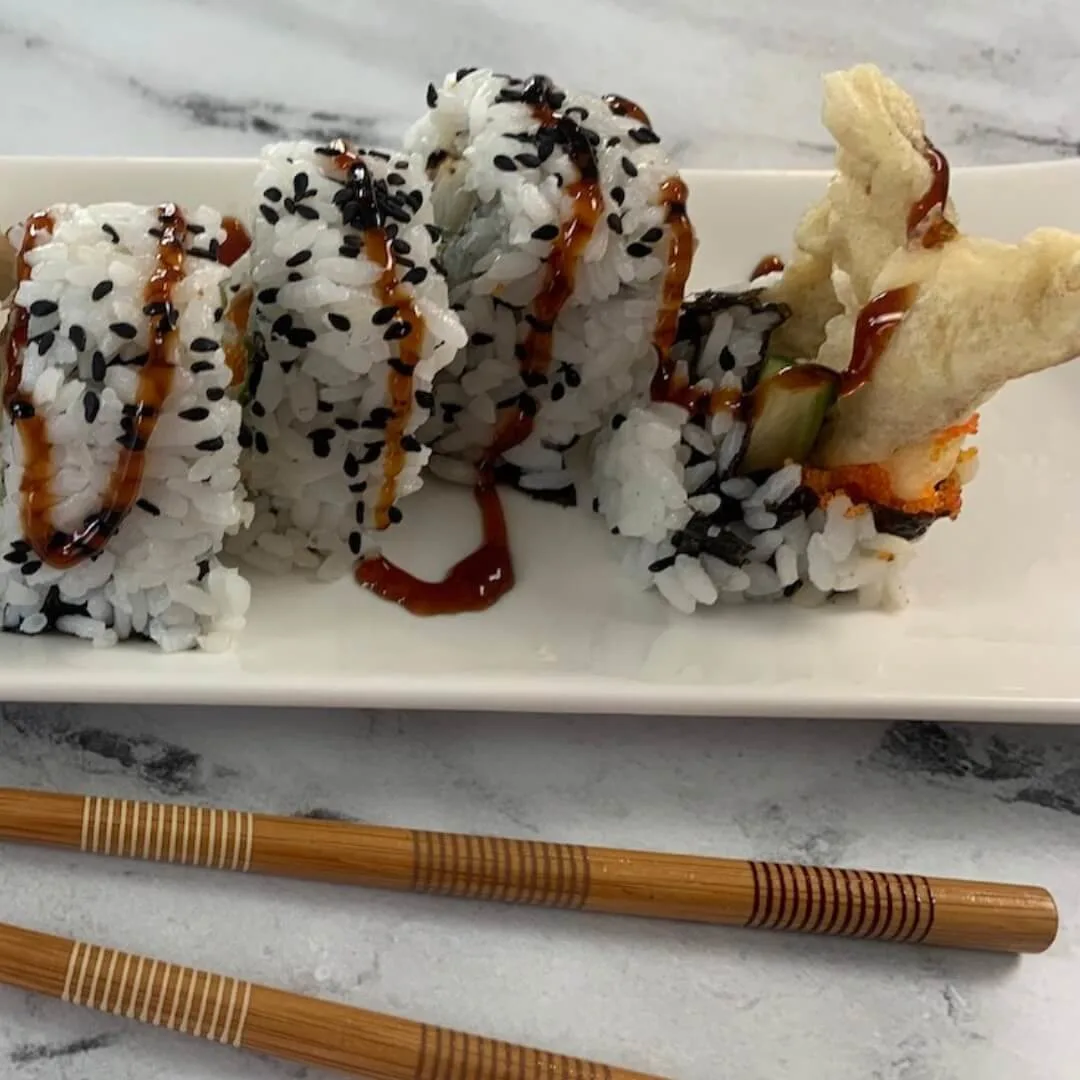
Spider Roll Recipe
Equipment
- 1 Bamboo Sushi Mat
- 1 Pot for cooking sushi rice
- 1 Pot for frying tempura batter
- 1 Sharp knife and cutting board
Ingredients
Sushi Rice
- 1 1/3 cups Sushi rice dried, will cook to 4 cups
- 1/4 cup Sushi vinegar
Tempura Batter
- Vegetable oil
- 2 cups All purpose flour
- 1 Egg Large
- 1 cup Water Ice cold
Sushi Roll
- 4 Nori sheets
- 1 Ripe avocado
- 1 English cucumber Sliced into 1/8 sticks
- 4 Soft Shell Crabs Cleaned
- 4 Tbsp. Masago or Tobiko
- Black Sesame seeds
- Unagi Sauce (optional)
Instructions
Cook Sushi Rice
- Rinse 1 1/3 cup of sushi rice by placing it in a colander and running water through it until the water is clear.
- After the rice is rinsed, add it to a sauce pan with 1 2/3 cups of water.
- Bring the water to a boil and then reduce the heat to low. Cover and let the rice simmer for 20 to 30 minutes, or until the water is absorbed and the rice is soft. While the rice is simmering, you can skip ahead and prepare the soft shell crab tempura.
- After simmering for 20-30 minutes, remove the rice and place into a bowl or dish and let cool. I would line the dish with parchment paper prior to adding the rice to avoid sticking.
- Mix 1/4 cup of sushi vinegar into your rice. Stir until it has absorbed into the rice. Once cooled and fully absorbed, your rice is ready to roll!
Heat the Oil and Prepare the Soft Shell Crabs
- In a sauce pan, heat vegetable oil on medium heat to 350 degrees.
- Make sure your soft shell crabs are cleaned. Most often they will come cleaned if you purchase from a seafood vendor but if not, you can clean by cutting the face off, removing the gills under both sides of the crab, and removing the flap from the underside of the crab.
- Blot your soft shell crabs with a paper towel to dry them off. If they are too wet they will pop during frying.
- Place one cup of flour into a bowl or onto a plate. Then dip the crabs into the flour making sure to cover both sides of the crab along with the legs.
Prepare Tempura Batter
- Assemble the ingredients and chill the water. You may need to add ice if you don’t have access to very cold water. However, make sure to remove ice cubes before combining with egg.
- Crack the egg into a small bowl and beat until the yolk and white are combined.
- Add cold water to the egg and mix well. I like to strain the ice water into the egg to assure ice-cold water with no ice cubes getting into the mixture.
- Sift 1 cup of flour into the egg and water combination.
- Using a spoon or chopstick, lightly mix making sure not to over stir. The batter should be mixed but a little lumpy.
Prepare the Crab Tempura
- Dip the flour coated crabs into the tempura batter ensuring the entire crab is coated with batter.
- Next, place the tempura coated crab into the hot oil and cook for 4 minutes.
- After four minutes, remove from the oil and place the crabs onto a paper towel-lined plate.
Assemble the Spider Rolls
- Slice the crab: Slice your soft shell tempura crab in half the long way to prepare it for your spider roll.
- Prepare your bamboo sushi mat: Cover your bamboo sushi mat with plastic wrap. This will help keep the rice from sticking to it.
- Press rice onto nori sheets: Next, place the nori sheet onto the plastic wrap with the shiny side facing down. Then press around 1 cup of rice onto the nori sheet in an even layer. Tip: Wet your hands prior to handling the sushi rice. This will prevent the rice from sticking to your hands.
- Add sesame seeds: After the rice is pressed onto the nori sheet, add a thin layer of black sesame seeds to the top of the rice. Then flip the sheet over so the rice is facing down.
- Flip nori sheet over: Gently flip the nori sheet over so the rice is facing down. You will add the filling directly to the nori sheet with the rice on the outside.
- Add the crab: Place both halves of the soft shell crab onto the nori sheet next to each other so the legs are sticking out each end of the sushi. This is what gives the spider roll its signature "spider like" appearance.
- Add the masago or tobiko: Spread around a tablespoon of masago (or tobiko) evenly across the nori sheet. This will add a bit of crunchy and salty flavor to your roll.
- Cut the avocado and cucumber: Cut the cucumbers into strips that are as long as your nori sheet and about 1/8 inch thick. Then slice the avocado in half the long way. Remove the seed and cut each half into 6 slices. Each whole avocado should yield around 12 slices. I often cut the slices right out of the avocado half and add directly to the roll to ensure freshness. You can also drizzle a little lemon juice over your cut avocado to prevent it from browning in your roll.
- Add the avocado and cucumber: Add the avocado slices and cucumber sticks horizontally along the nori sheet. In general, I add 2-3 avocado slices and 1-2 cucumber sticks depending on the size of each ingredient and how everything fits.
- Roll the sushi: Use the bamboo sushi mat to fold your roll until it's completely enclosed. Once the rice is making contact with the nori roll, pull back the sushi mat so it doesn't get caught in the sushi. Still using the sushi mat as your guide, finish rolling until the roll is completely wrapped. Then wrap the sushi mat around the roll and gently press, tightening the roll together.Keep in mind that rolling sushi is an art that may take some practice so don’t get frustrated if it doesn’t look perfect your first time. It will get easier the more you do it.
- Cut the roll: Using a sharp knife, cut the roll into 8 pieces. I do this by first cutting the roll in half. Then cut each half in half. Then cut each fourth in half. Tip: Be sure to clean and wet the edge of your knife before cutting each roll.
- Drizzle with unagi (eel) sauce (optional): I like to lightly drizzle my spider rolls with unagi (eel) sauce prior to serving as I think it provides a good flavor and an appetizing presentation.
- Serve and enjoy: I usually serve with unagi (eel) sauce in a ramekin for dipping. You can also serve with soy sauce, wasabi and pickled ginger.
Video
Notes
Nutrition
Frequently Asked Questions
Is a spider roll cooked?
Yes. The primary protein in a spider roll is soft shell crab which is fried in a tempura style batter.
Is a spider roll an authentic Japanese sushi?
Developed in North America, the spider roll is not an authentic Japanese sushi. In fact, it would be difficult to find in most sushi restaurants throughout Japan.
Is a spider roll gluten-free?
If ordered at a sushi restaurant, I wouldn’t count on a spider roll being gluten-free as the soft shell crab is fried in a tempura batter that usually contains gluten. However, if you make it yourself, you can substitute the flour in the tempura batter for a gluten-free alternative.
Final Thoughts on Spider Rolls
If you are looking for a fun roll to liven up your sushi platter, the spider roll is a good choice. I enjoy the combination of flavors that this unique roll brings. I hope enjoy making this roll as much as I do. Happy cooking!
For more great information, check out the below articles:
Also, subscribe to our YouTube Channel for some great videos!
